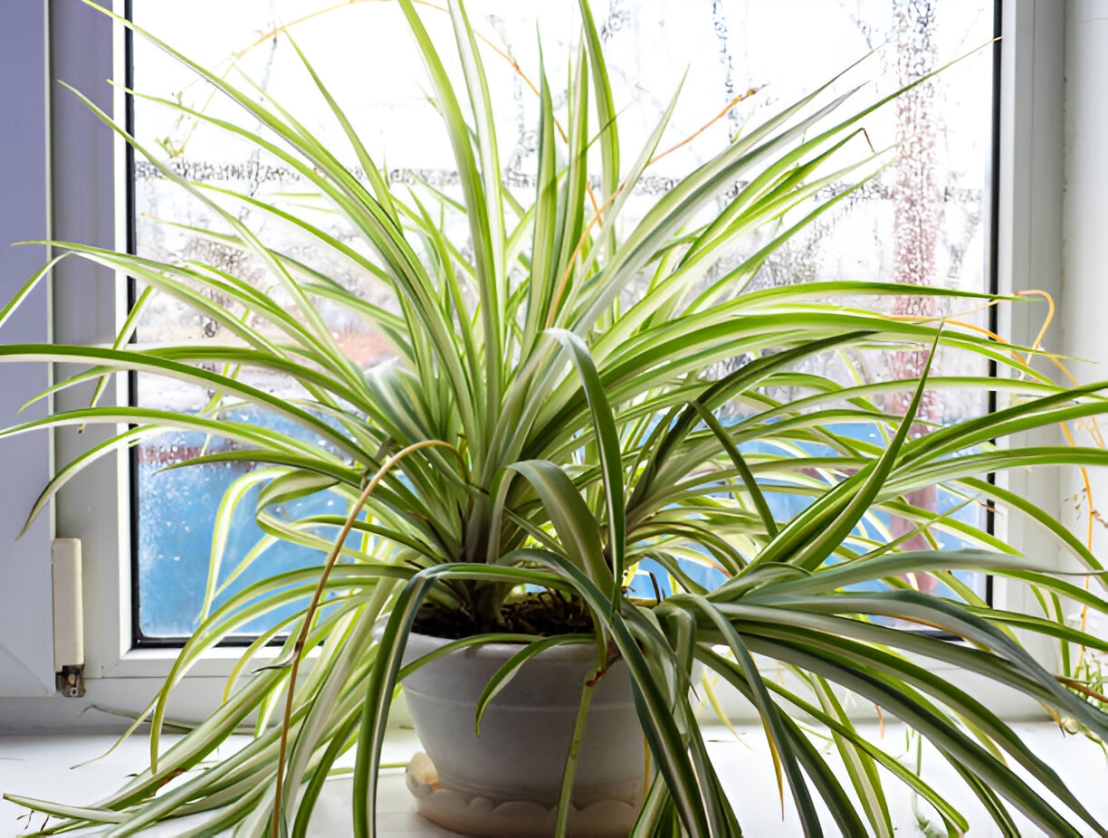Spider Plant (Chlorophytum comosum): Nature’s Air Purifier with Style

Looking for a houseplant that’s low-maintenance, stylish, and safe for pets? Meet the Spider Plant – the green superstar of indoor gardening. Known scientifically as Chlorophytum comosum, this plant earns its nickname from its unique, spider-like “babies” that dangle from long, arching stems. It’s also called airplane plant, ribbon plant, or hen and chickens, but whatever you call it – it’s a houseplant hero.
Why You’ll Love Spider Plants
- Effortlessly Chic: Long, arching, variegated leaves add a graceful touch to any space.
- Air Purifier Extraordinaire: Shown in NASA studies to help remove indoor toxins like formaldehyde and xylene.
- Pet-Friendly: Completely non-toxic to cats, dogs, and humans, so no worries if your furry friend takes a nibble.
- Hard to Kill: Spider plants are extremely resilient – perfect for beginners or forgetful plant parents.
How to Grow & Care for Spider Plants
| Care Factor | What It Needs |
|---|---|
| Light | Bright, indirect sunlight – avoids leaf burn. |
| Water | Keep soil lightly moist, avoid soggy roots. |
| Temperature | Thrives between 65–90°F (18–32°C). |
| Humidity | Loves moderate humidity but is adaptable. |
| Soil | Well-draining potting mix, ideally loamy. |
? Pro Tip: If you see brown leaf tips, it might be fluoride in your tap water. Switch to filtered water to keep those tips crisp and green!
Blooms & Babies
Spider plants not only produce small, white, star-shaped flowers, but also grow tiny plantlets (a.k.a. “spiderettes” or “pups”) along long stems. These natural offshoots can be easily propagated – just pot them in soil and watch them grow!
Air Purification Powers – Fact or Hype?
Spider plants got famous for their air-cleaning abilities thanks to NASA’s Clean Air Study. In labs, they reduced toxins, but real-life homes need dozens of plants to match those results. Still, it’s a nice bonus for having a beautiful plant around.
Wait... It's Edible?
Yes, spider plants have edible tuberous roots used traditionally in some African cultures – though some report mild laxative effects. So, maybe leave it to the locals and enjoy it as a decorative delight.
Popular Varieties
- ‘Vittatum’: Green leaves with a bold white stripe down the center – perfect for hanging baskets.
- ‘Variegatum’: Darker green leaves with white edges – compact and tidy.
- ‘Bonnie’: A curly-leaved version with the same charm in a tighter package.
Final Thoughts
Spider plants bring style, simplicity, and a breath of fresh air into any room. With their easy care, pet-safe nature, and air-purifying flair, they’re the perfect plant for every home, from minimalist lofts to cozy apartments.
Ready to green your space? ?
Add a spider plant to your collection and enjoy nature’s elegance—no green thumb required!

Comments : 0